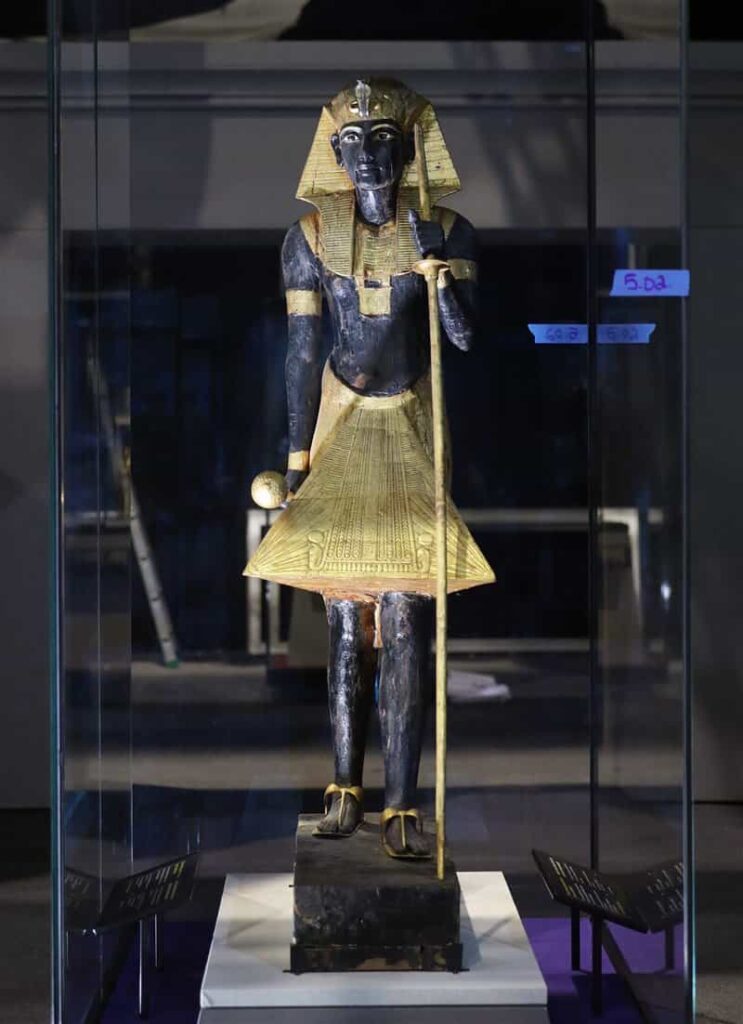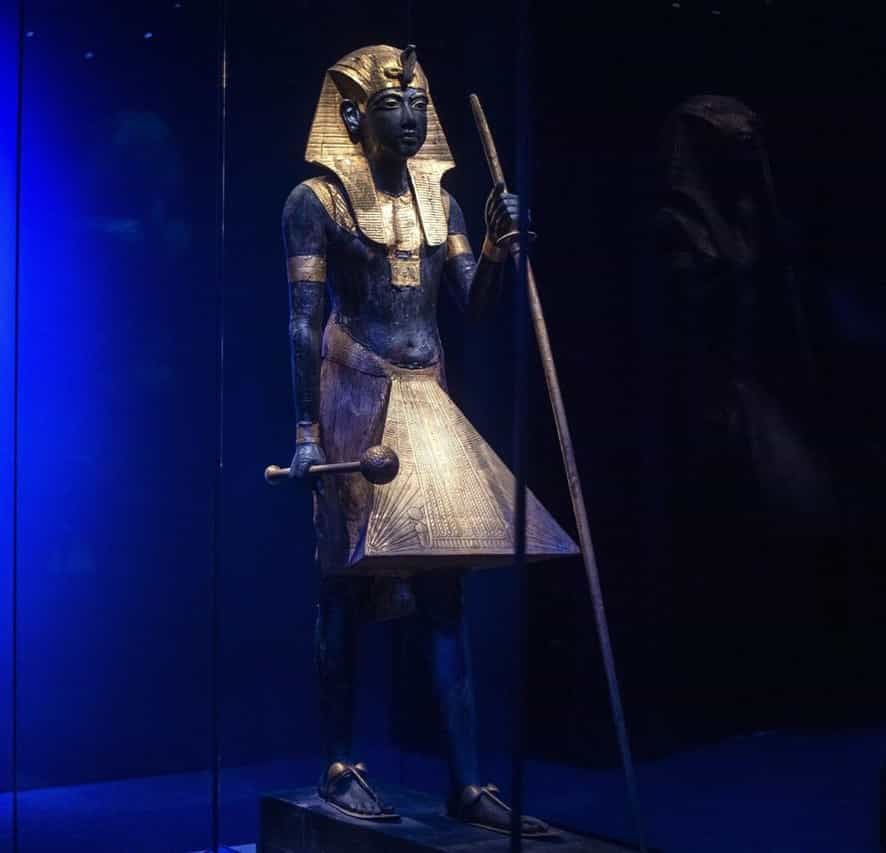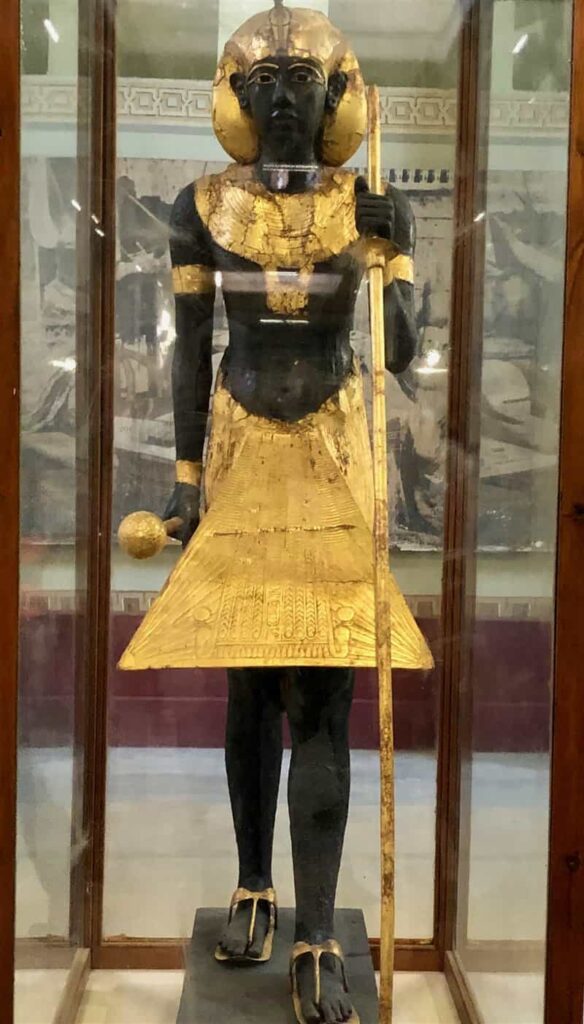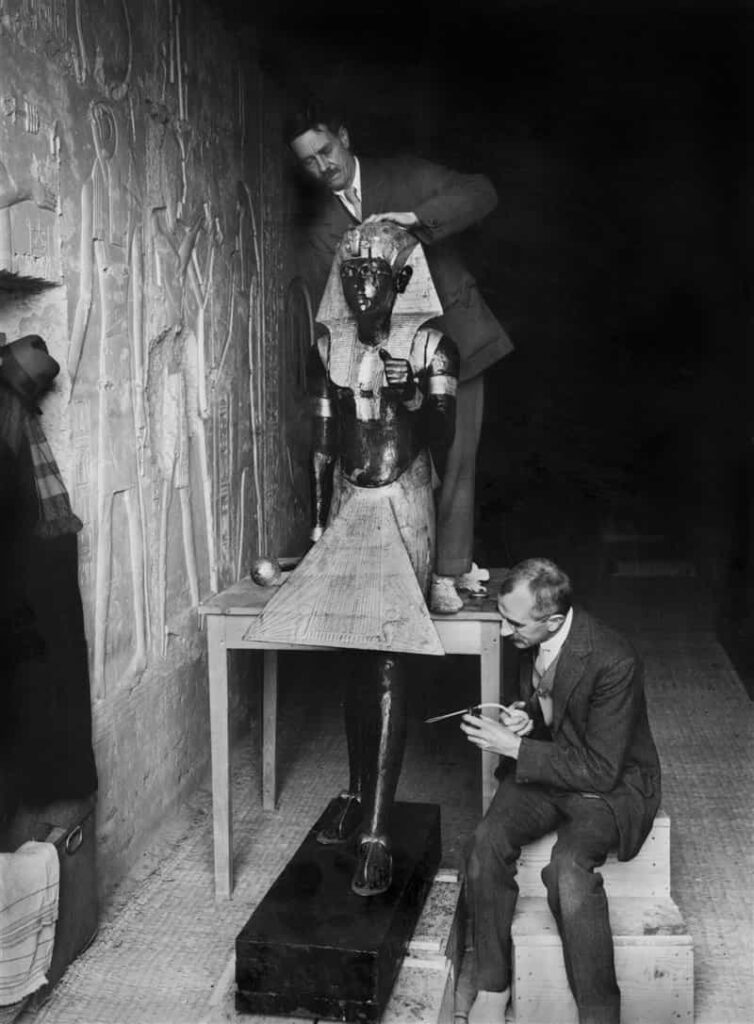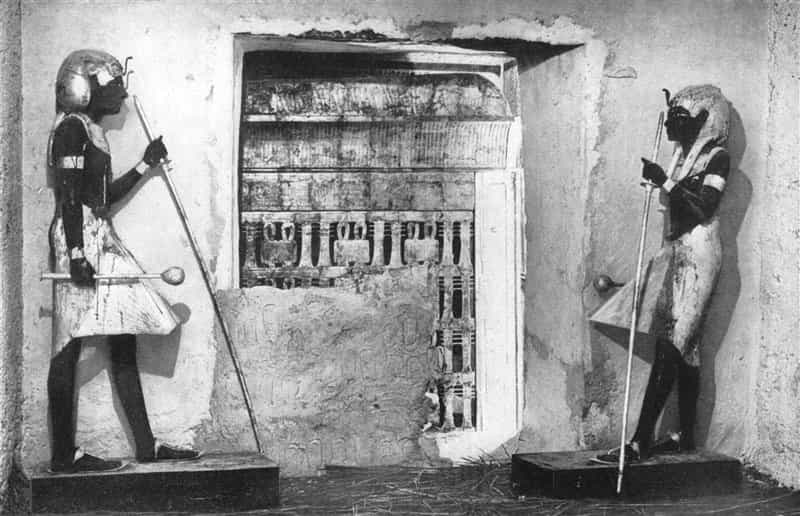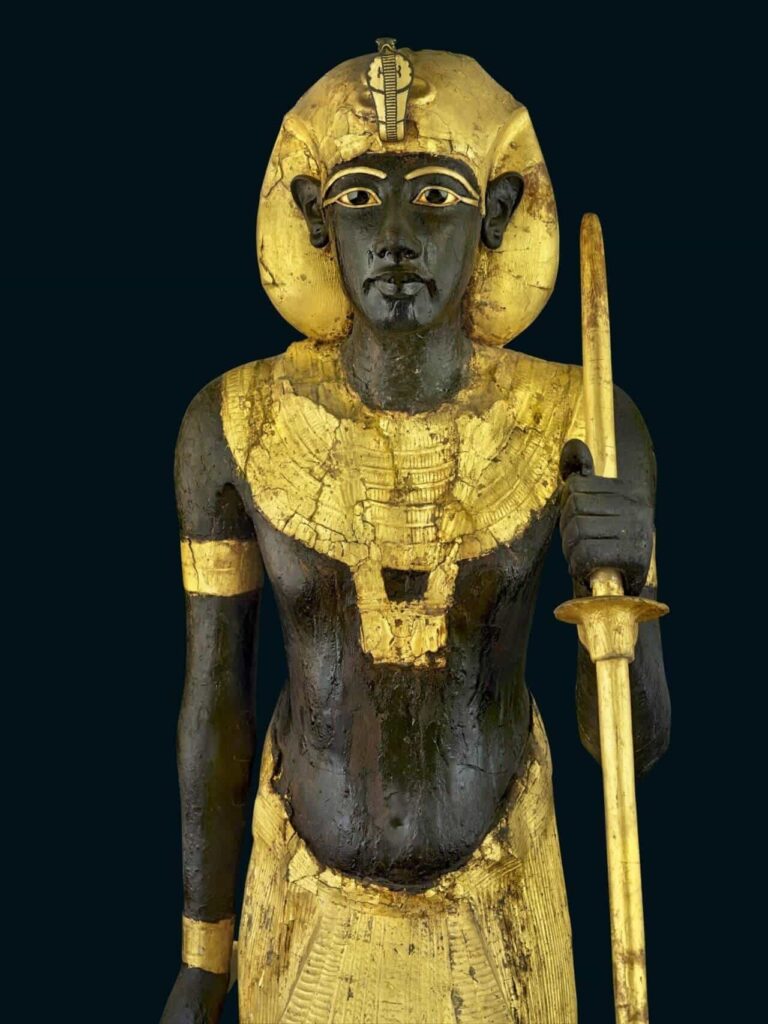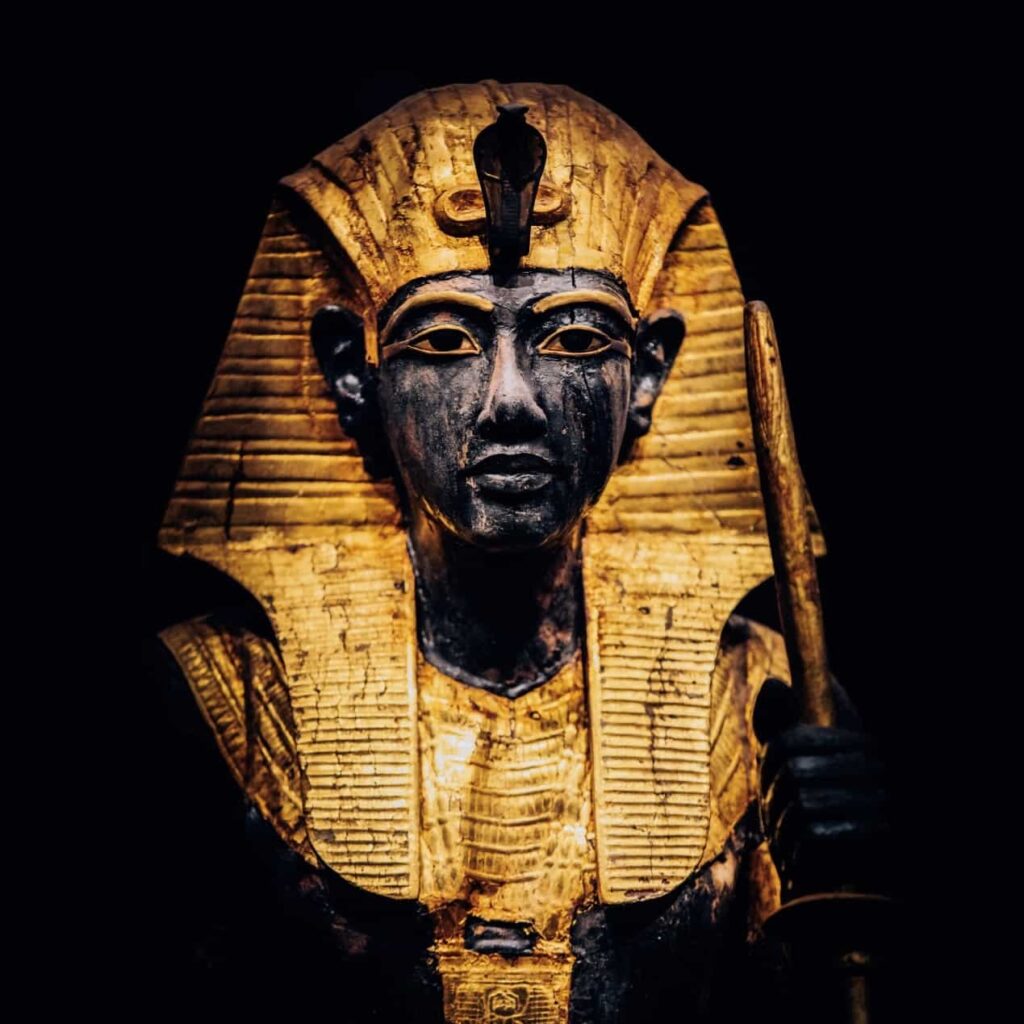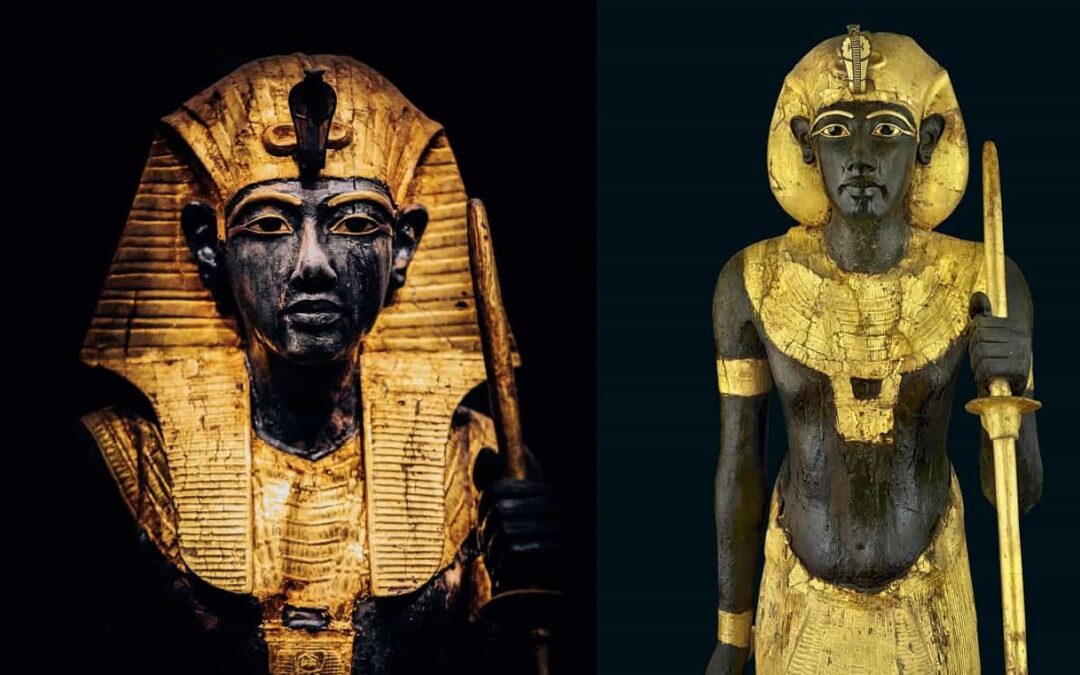Carter, a fortunate British Egyptologist, discovered what appeared to be two life-sized statues in 1922 among the vast array of various objects crammed into the antechamber of Tutankhamun’s tomb in the Valley of the Kings. They stood on either side of one of the walls in the room, which resembled a sealed door.
These figures, which were so intriguing to archaeologists when they first saw them, represented the owner of the tomb, Pharaoh Tutankhamun. Without a doubt, they seemed to be sentinels of the monarch’s burial chamber, who was hidden behind the sealed wall.
The statues are made of wood covered with plaster; the plaster is painted black and has golden elements. Both statues are very similar. They are represented as standing with their left legs advanced, walking in a typically masculine posture, and holding a papyrus staff in their left hand and a mace in their right.
But, although they are very similar at first glance, there are many substantial differences between them.
Similarities and differences
Before analyzing the differences between the two statues, perhaps we should emphasize some of their similarities. In fact, both show the pharaoh wearing a necklace on his chest, which is topped with a wide chain and decorated with a winged scarab.
They also wear wristbands and bracelets, are dressed in an elaborate knee-length skirt with a trapezoidal starched front, and both wear simple sandals.
Their eyes are made of obsidian and crystalline limestone, and both have the cobra, a symbol of protection and royalty, attached to their foreheads.
The black of their skin possibly represents, according to scholars, the silt left by the Nile after the flood—a reference to fertility and rebirth.
So, how are they different? Well, the main difference between the two statues of the pharaoh is in their respective headdresses.
One wears the typical nemes scarf, a striped fabric that falls over the shoulders and is tied with a braid at the back. Throughout ancient Egyptian history, many statues of pharaohs have been represented with this ceremonial headdress. It is associated with the solar god Ra and symbolizes Khepri, the scarab that represents the sun at dawn.
It is also believed that it identifies the king with the falcon god Horus, son of Osiris, the lord of the underworld.
The other statue, meanwhile, wears the afnet or khat. This is a “bag”-shaped wig; it is a crown that has a typically funerary meaning (it has only been documented in this context) and is apparently related to the night and the journey of the deceased to the afterlife.
Experts believe that the presence of these headdresses on both statues could represent the nocturnal journey of the sun god Ra (symbolized by the khat headdress), who is reborn anew each dawn, (symbolized by the nemes headdress).
The pharaoh and the gods
Also, the two statues have texts inscribed on them. The statue wearing the khat bears an inscription on its kilt, identifying it as “the ka of Horakhty, the Osiris, king, lord of the Two Lands, Nebhkheperure, true-voiced.”
The deceased king was always identified with the god Osiris—the epithets “true-voiced” and “justified” refer to the dead. Thus, this statue is a representation of the ka (possibly the most important of the five components of the human spirit) of the deceased pharaoh.
The inscription on the statue wearing the royal nemes identifies it as “the good god Nebkheperure, son of Ra, Tutankhamun, governor of the southern Iunu, endowed with eternal life, like Ra, for all days.”
All these references, including that of “Southern Iunu”—the name by which the city of Heliopolis, site of the great temple dedicated to the god Ra, was known—have a solar connotation.
“Everywhere the glitter of gold”
Experts suppose that the gold plating (the color of the sun and the flesh of the gods) of both statues’ skirts, sandals, headdresses, pectorals, bracelets, maces, staffs, and on the profile of the eyes and eyebrows accentuates Tutankhamun’s connection to the sun god Ra as he jealously guards the entrance to the burial chamber, the most important and sacred place in the tomb.
Although these are not the only statues with these characteristics located in royal tombs, they are by far the best preserved and the most complete.
They are also the only ones of their kind to feature such intense gold plating. This is seen very frequently in other ritual statues of Tutankhamun and in many objects found in the tomb.
Source: Carme Mayans, National Geographic
